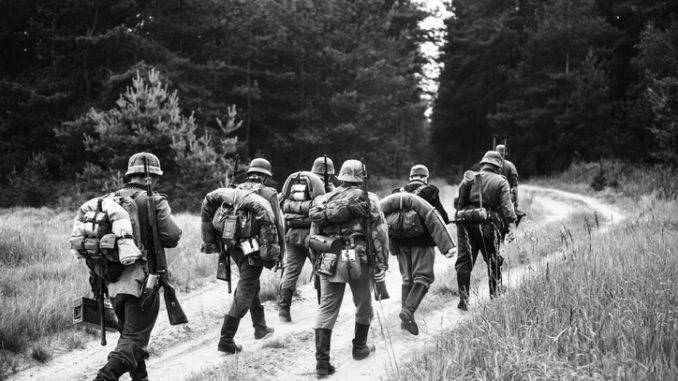
When Veterans History Project staff members are called upon to identify particularly interesting, poignant, or visually appealing collections in our archive, one name that comes up again and again is Kenje Ogata. A Japanese-American who fought for more than two years for the right to serve his country as an aviator during World War II, Ogata’s collection is a reminder of one of the difficult parts of our nation’s history, as well as the lasting contributions that Asian-Americans have made to America’s wartime efforts.
Today, in honor of Asian-Pacific American Heritage Month, we highlight a few more of the scores of Asian-American, Native Hawaiian, and Pacific Islander American veterans who have shared their stories with the Veterans History Project.
Like Kenje Ogata, Kurt Chew-Een Lee was determined to serve his country during World War II, and joined the Marine Corps in 1944. He expected to ship out to the Pacific Theater following boot camp, but was instead assigned to a stateside Japanese language school. Following World War II, Lee was disappointed to have missed the chance to serve in combat, and opted to pursue a career in the military. Shortly after World War II, Lee became the first Asian-American to serve as a regular officer in the United States Marine Corps, and would soon have the opportunity to distinguish himself on the battlefield.
During the Korean War, while leading a platoon at Inchon, Lee’s unit was attacked by Chinese forces. As he explained during his VHP interview, he directed his men to establish a defensive line, and advanced alone in order to provoke the enemy to open fire and reveal their positions. Taking fire from nearby Chinese forces, he called out to them in Mandarin, “Don’t shoot! I’m Chinese!” But his American accent gave him away, and the attack continued. Lee was wounded, but his actions saved his men, and he was awarded the Navy Cross for his extraordinary heroism.
“I had recognition that I was really an American. And if my father had come to this country… if he came from China on the faith that this country would offer opportunities, then I needed to think twice before leaving.”Unlike Ogata and Lee, Peter Robert Young was not eager to serve his country in uniform. A critic of the war in Vietnam, Young was drafted into the Army in 1968, shortly after completing his master’s degree in library science. Two weeks before he was due to ship out to Vietnam, he considered deserting and moving to Canada. But, as he states during his VHP interview,
When Young arrived in Vietnam and reported to his duty station, a commanding officer said to him “I’m going to do something that the Army never does, I’m going to give you a job that meets your qualifications.” With that, Young was sent to run a library, housed in a double wide trailer in Cu Chi. Thanks to the presence of reading material and an air conditioner, the library was popular among the men, and the experience of providing library services to soldiers profoundly impacted Young both personally and professionally.
The son of a civilian Air Force employee, Kenneth Tagang Bulahan opted to join the Navy in order to try something different. During his VHP interview he described his training as miserable – he suffered multiple stress fractures in both of his legs, but ultimately he endured by maintaining a positive attitude and focusing on the goal: becoming a Navy SEAL. Over the course of his career he conducted unconventional warfare operations in Somalia, the Philippines, and Iraq, and though he faced dangerous situations, he says his fear and anxiety were kept at bay by adrenaline, and his desire to support the men around him.
Jaden J. Kim began her military career as an Army ROTC cadet, but soon realized that she was better suited to the Marine Corps. Kim excelled as a Marine, and secured a coveted spot as an aviator, serving as a “backseater”—a weapons system officer who coordinated target locations. At the time of her VHP interview in 2003, Kim had deployed in support of Operation Bright Star, Operation Enduring Freedom and Operation Iraqi Freedom. Though she describes long hours on duty, lack of sleep, and austere living conditions, her primary concern was always supporting the troops on the ground. “I wish I could really do more. I really wish I could be there. I wish I could be superhuman… always have extra, infinite number of bombs, and any time someone asked for help I could go out there.”
Today there are more than 300,000 living Asian-American, Native Hawaiian, and Pacific Islander American veterans, but the Veterans History Project holds the stories of fewer than 300 of them. Help us build our collections by interviewing the veteran in your life. No matter the veteran’s race or ethnicity, by sharing his or her story, every veteran can help ensure that a more complete picture of the military experience is preserved for future generations here at the Library of Congress. For more information on participating in the Veterans History Project, click here.
by
Article from Library of Congress
